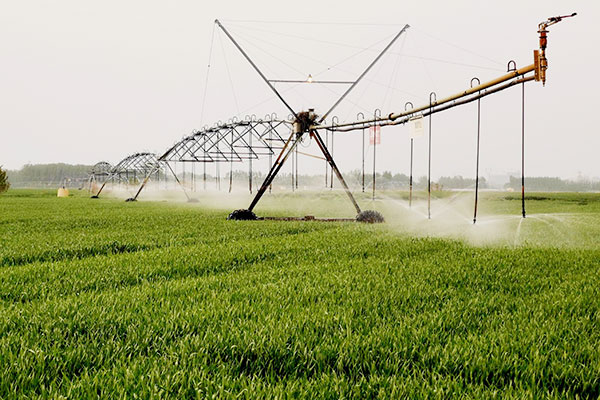Lateral move irrigation systems are increasingly popular in modern agriculture due to their efficiency and ability to cover large areas uniformly. Tuy nhiên, like any irrigation method, they come with their own set of advantages and disadvantages. Understanding these can help farmers make informed decisions about whether a lateral move irrigation system is the right choice for their fields.
Lateral Move Irrigation Definition/What is a Lateral Move Irrigation System?
MỘT lateral move irrigation system, sometimes known as a linear move system, consists of a series of sprinklers mounted on wheeled towers that move laterally across a field. Unlike center pivots that rotate around a central point, lateral move systems travel in straight lines, allowing them to irrigate rectangular plots more efficiently. This design makes the lateral move irrigation system ideal for large-scale agricultural operations where uniform water distribution is crucial.

Lateral Move Irrigation Systems Advantages
- Efficient Water Usage
- MỘT lateral move irrigation system is designed to minimize water wastage by delivering water directly to the crops. This reduces evaporation and runoff compared to traditional methods, optimizing resource usage.
- Uniform Coverage
- These systems provide even water distribution across the entire field, promoting consistent crop growth and reducing the risk of dry spots. The structure of the lateral move irrigation system ensures that every part of the field receives adequate moisture.
- Suitable for Various Terrain
- Lateral move irrigation systems can be adapted to different field shapes and sizes, particularly large rectangular plots. This versatility allows farmers to maximize water efficiency even on uneven terrains.
- Reduced Labor Requirements
- The automated nature of lateral move irrigation systems reduces the need for manual labor, allowing for more efficient field management. This is particularly advantageous during peak agricultural seasons when labor demand is high.
- Cost Savings Over Time
- Despite the initial investment, the efficient water usage and reduced labor costs contribute to long-term savings, making the lateral move irrigation system a cost-effective solution in the long run.
Here is the lateral move irrigation system youtube video working process for your reference!!
Lateral Move Irrigation Systems Disadvantages
- High Initial Investment
- The cost of purchasing and installing a lateral move irrigation system can be substantial, making it a significant upfront investment for farmers.
- Maintenance Requirements
- Regular maintenance is necessary to ensure the system operates efficiently, which can add to the overall cost of ownership. Issues such as nozzle blockages and wheel alignment need frequent monitoring.
- Power Dependency
- These systems require a reliable power source to function, which may be a limitation in regions with unstable electricity. Backup power solutions might be necessary to avoid irrigation interruptions.
- Water Source Limitations
- MỘT lateral move irrigation system requires access to a continuous water supply along its path of movement, which can be a constraint in water-scarce areas. Effective water management strategies are crucial to overcome this limitation.
- Operational Complexity
- While automation reduces labor, managing the lateral move irrigation system effectively requires technical understanding. Farmers may need additional training to operate and troubleshoot the system efficiently.
Phần kết luận
Lateral move irrigation systems are an effective solution for large, rectangular fields, offering efficiency and uniform water distribution. Tuy nhiên, the high initial costs and maintenance requirements should be carefully considered. Farmers need to evaluate their specific needs, field layouts, and water availability before deciding if a lateral move irrigation system is the right fit. With proper planning and maintenance, it can be a transformative technology for modern agriculture.

